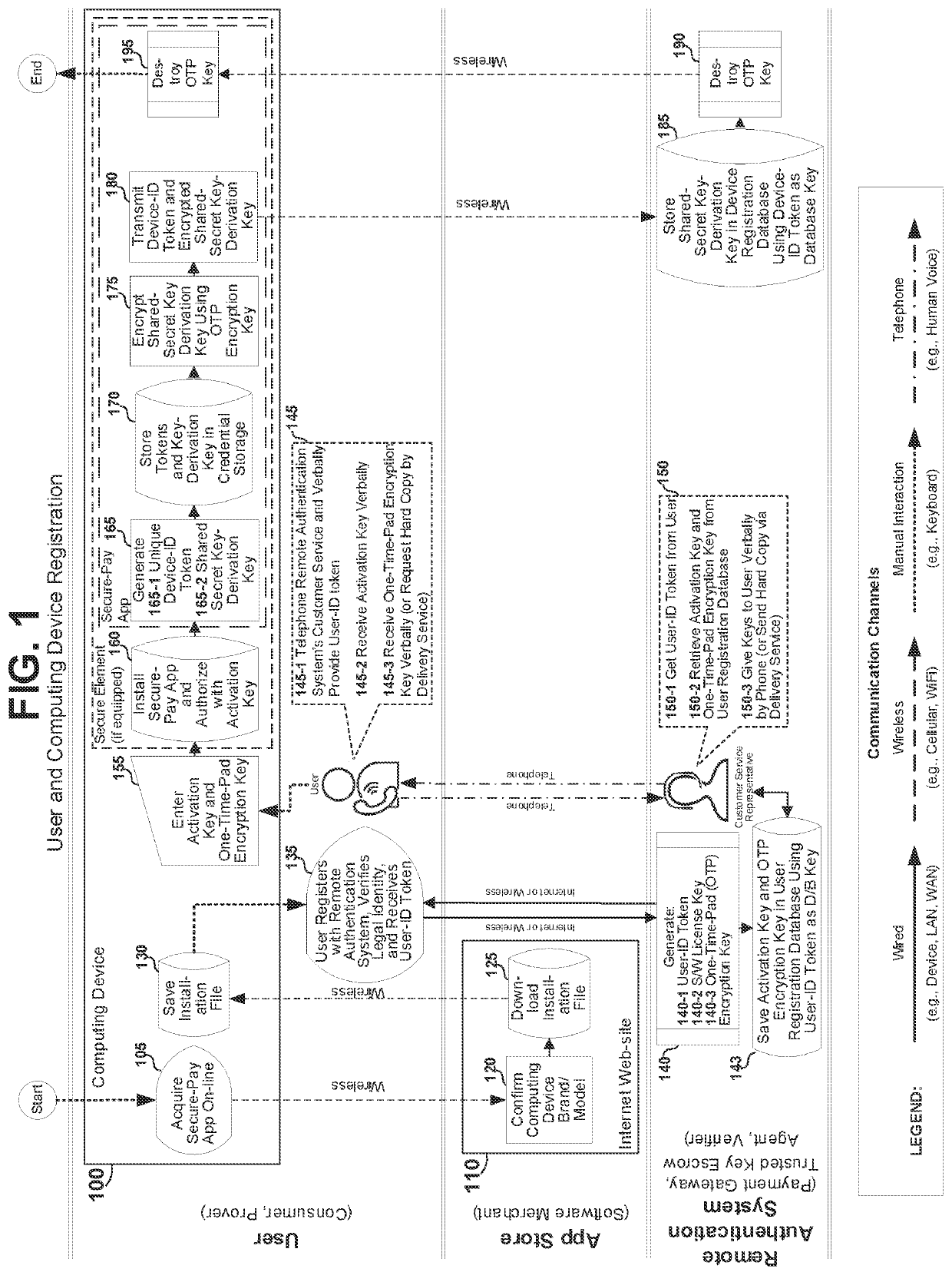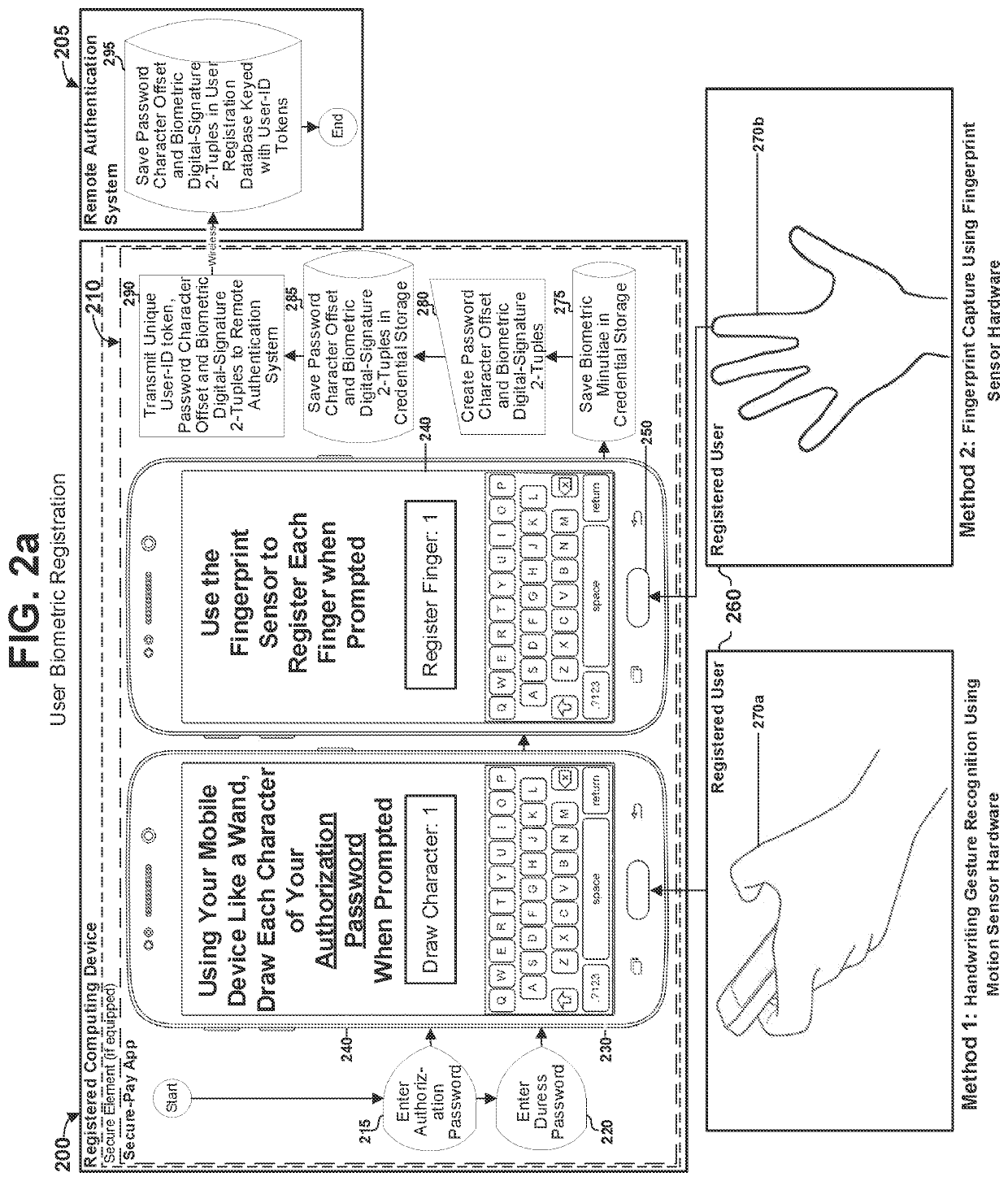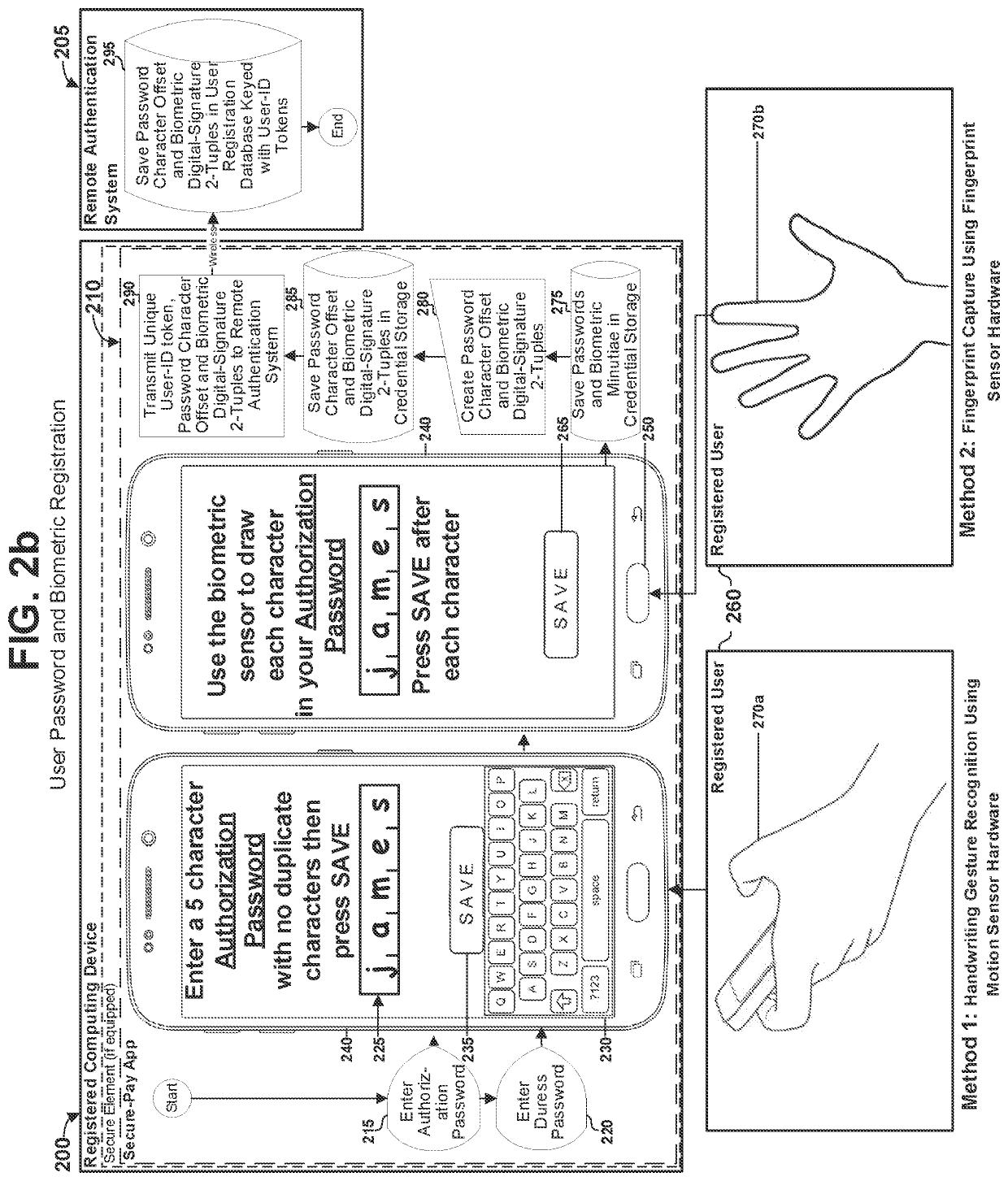Systems and methods for trustworthy electronic authentication using a computing device
a computing device and electronic authentication technology, applied in the direction of securing communication, digital transmission, encryption apparatus with shift register/memory, etc., can solve the problems of increasing the work effort and complexity of fraudsters, preventing all but the most skilled and well-resourced from succeeding, and passwords more susceptible to in-person eavesdroppers or malware on the devi
- Summary
- Abstract
- Description
- Claims
- Application Information
AI Technical Summary
Benefits of technology
Problems solved by technology
Method used
Image
Examples
Embodiment Construction
[0083]The present application describes systems, methods and computer readable media implementing multi factor authentication which invention has a scope defined solely by the claims appended hereto. The multi-factor authentication systems and methods disclosed herein improve secure processing of electronic payments over an internetworked e-commerce environment to comply with a plurality of standards-based security and other commercial and government regulatory requirements from e-commerce payment processing bodies worldwide including but not limited to; the US Payment Card Industry (PCI) Data Security Standard (PCI-DSS), the PCI Payment Application Data Security Standard (PCI PA-DSS), the European Payments Council (EPC) Single Euro Payments Area (SEPA) Cards Standardization (SCS) guidelines, the United States' Federal Financial Institutions Examination Council (FFIEC) guidelines, Quick Recognition (QR) codes conforming to the open standard QR Bill™ Code User Payment Guidelines publ...
PUM
 Login to View More
Login to View More Abstract
Description
Claims
Application Information
 Login to View More
Login to View More - R&D
- Intellectual Property
- Life Sciences
- Materials
- Tech Scout
- Unparalleled Data Quality
- Higher Quality Content
- 60% Fewer Hallucinations
Browse by: Latest US Patents, China's latest patents, Technical Efficacy Thesaurus, Application Domain, Technology Topic, Popular Technical Reports.
© 2025 PatSnap. All rights reserved.Legal|Privacy policy|Modern Slavery Act Transparency Statement|Sitemap|About US| Contact US: help@patsnap.com



